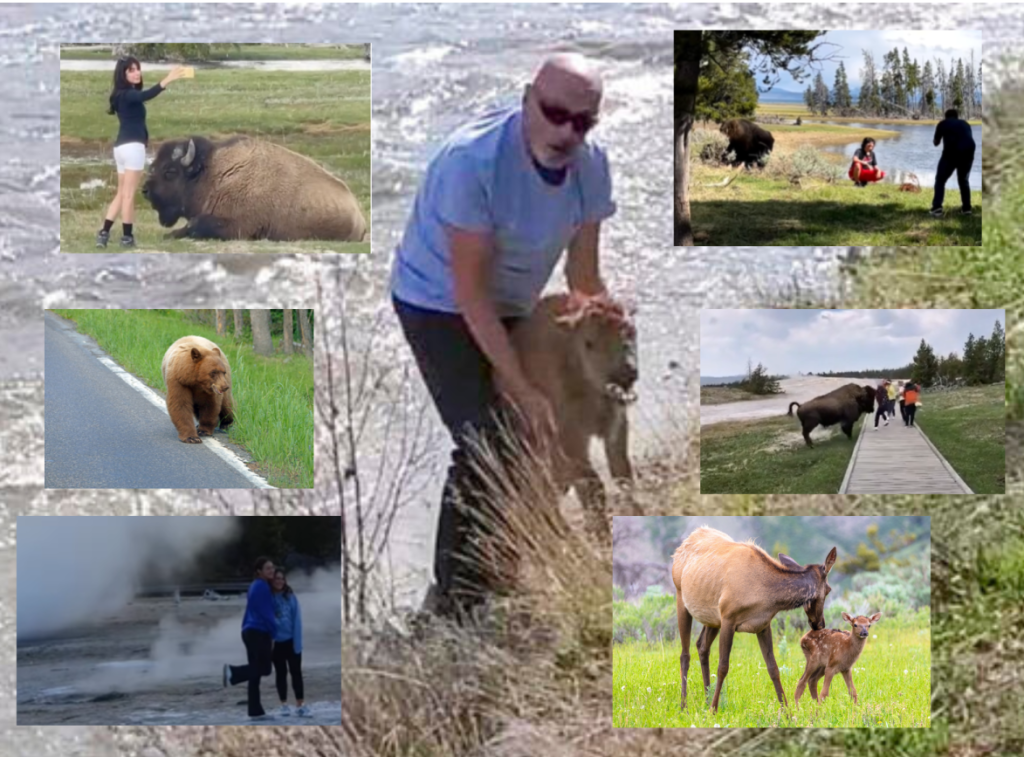The 5 Yellowstone Wildlife Viewing Essentials Every Visitor Should Pack
Written by Nick on June 5, 2023
Yellowstone Wildlife Viewing is Better When You Have These Essentials
Wildlife is one of the biggest draws for the millions who flock to Yellowstone National Park each year. For some, these iconic animals are simply something to glimpse from the highway while en route to the next developed area, such as Old Faithful or Mammoth Hot Springs.
But for other visitors, the wildlife in Yellowstone represent the heartbeat of this pristine region, and represent an attraction in their own right.
If you fall into this latter category, you want to make the most of your opportunity to view and photograph Yellowstone wildlife. But if it’s your first trip to America’s first national park, you may not know what to expect in terms of access, weather, and other factors that will impact your wildlife viewing experience.
In this guide, we’ll cover five essentials that every motivated Yellowstone wildlife viewer should pack before leaving home. With these items at your disposal, you’ll get more out of your trip to Yellowstone National Park and each wildlife viewing excursion.
1. Quality Optics
The first thing to know about visiting Yellowstone is that most visitors see the park from inside their vehicles, or at developed areas with services such as dining, restrooms, and fuel.
Now and then, you’ll get lucky and come across an animal such as an elk or a bison near (or even on) the roadway. But more often, you’ll see a group of people at a pull-out or parking area with their binoculars and spotting scopes pointed in the same direction as they watch animals that are hundreds or even thousands of yards away.
That’s why a spotting scope or binoculars are vital for those intent on getting a clear, meaningful view of Yellowstone wildlife. Of course, there’s a range of products available at different price points, as well as add-ons (such as a tripod for your spotting scope) that may or may not be worth purchasing for your trip.
It’s up to you to decide which gear is right. But at a minimum, consider taking a budget pair of binoculars. Although they won’t give you a sharp view of those grizzly cubs on the other side of the valley, they can help you get a better view of Yellowstone wildlife within a hundred yards or so.
2. A DSLR Camera
Phone cameras have come a long way in the last 15 years, but they’re still no match for a quality DSLR camera with real zoom.
Sure, newer iPhones give you enough control to take quality pictures or your friends in the same room, or capture wide shots at a sporting event, but to get crisp images of Yellowstone wildlife you can take home and print, you need something more.
Every year, plenty of Yellowstone videos who’ve been duped into thinking their phone camera can do everything arrive in the park only to find their zoom and low-light capabilities woefully ineffective. Unfortunately, these folks take a few subpar photos of Yellowstone wildlife, but these photos are of such poor quality that they’ll never go anywhere beyond the camera roll.
As with the binoculars and spotting scopes mentioned above, there’s a wide variety of DSLR cameras available, and it’s easy to find one that fits your budget.
If a high-quality camera seems like an unnecessary expense, just remember that phone cameras won’t get the job done in Yellowstone. Think of a DSLR as cheap travel insurance — it will help you remember your trip for years to come and deliver incredible images of Yellowstone wildlife you can share with your friends and family back home.
3. Hat, Jacket, and Boots
In Wyoming, where most of Yellowstone is located, there’s a saying: “If you don’t like the weather, wait five minutes.”
Weather can change rapidly in the Yellowstone region, which is why — whether you’re viewing wildlife or not — you should dress in layers each day of your trip. But if you’re going out of your way to watch and photograph the animals that call Yellowstone National Park home, you’ll want to be prepared with clothing that can get you through your entire trip comfortably, rain or shine.
That’s why a hat, jacket, and boots are essential. Many of the hiking trails in Yellowstone are fairly rugged; it’s not unusual to find yourself slogging through a trickle of water or mud, so know that your tennis shoes won’t cut it.
Due to the topography of the region, the forecast isn’t always accurate, and if you’re hiking for a couple of miles in the Lamar Valley, for instance, you don’t want to be caught unprepared when rain or cold weather moves in. With a jacket and hat, you can stay comfortable and continue enjoying Yellowstone wildlife, rather than having to pack it in and head back to the lodge.
4. A Yellowstone Wildlife Viewing Guide
Much of the wildlife in Yellowstone is easy to identify. Bison are easy to pick out, and there’s no danger of confusing a black bear with a yellow-bellied marmot.
However, once you’re in the field, will you be able to tell the difference between a black bear and a grizzly bear? What about telling Yellowstone wolves and coyotes apart? Even if you have a keen eye for wildlife in the area where you life, distinguishing between species in Yellowstone can be tricky, especially if you’re using binoculars to view them from a distance.
That’s why you should purchase a Yellowstone wildlife viewing guide and keep it handy during your trip. Don’t plan on being able to ask Siri or Google, because WiFi and cell service in Yellowstone are spotty at best and typically unavailable.
With a pocket guide handy, you can quickly figure out whether you’re seeing a pelican or a swan, which will help you have more fun viewing Yellowstone wildlife.
5. Common Sense
Unfortunately, this isn’t something you can purchase from Amazon, but it is essential for enjoying your trip to Yellowstone National Park.
Generally, using your common sense is about staying safe while viewing wildlife. First and foremost, Yellowstone is bear country, so you need to know the most important aspects of Yellowstone bear safety.
Additionally, There are a few important dos and don’ts that every visitor should be aware of.
For example, don’t stop in the middle of the highway to watch a bison graze in the adjacent meadow. This not only slows down traffic, but can pose a danger to your fellow motorists and even disturb the animals.
It’s also important to know the park’s regulations regarding the minimum distances for viewing wildlife in Yellowstone:
- Remain at least 25 yards from all wildlife such as elk and bison.
- Remain at leaset 100 yards from predators such as bears and wolves. These animals are dangerous and will not hesitate to kill you. You are responsible for your own safety.
And in general, never approach Yellowstone wildlife. Sure, that bison might look fuzzy and docile, but in fact, bison are enormous and incredibly powerful animals that injure several unwise Yellowstone visitors each year.
Also, take care in Yellowstone’s thermal areas. Always remain on the boardwalk, and never enter the astonishingly acidic, scalding water. Not only could you become seriously injured, but you could also damage the fragile ecosystems that make the park’s thermal areas unique.
For more tips on using your thinking cap, check out our guide to responsibly visiting Yellowstone National Park.

